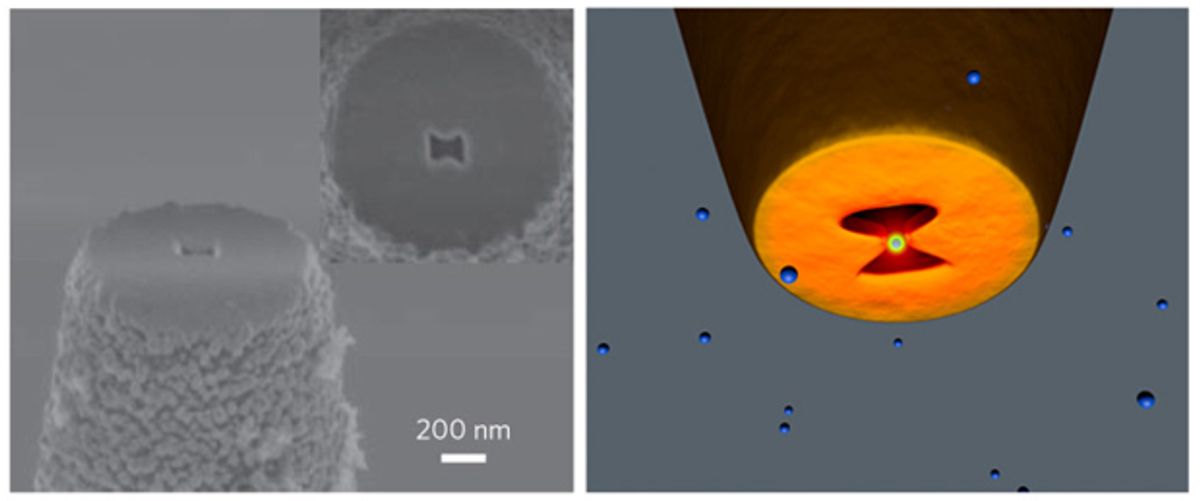Optical tweezers—more formally known as “single-beam gradient force traps"—have been a key instrument in manipulating matter in biology and quantum optic applications since Bell Labs described an instrument in 1986. The problem for the tool’s use in nanoscale applications is that it couldn’t really manipulate particles smaller than a few hundred nanometers.
Now researchers at the ICFO-The Institute of Photonic Sciences near Barcelona, Spain have taken optical tweezers to a new level by employing plasmonics to make it possible for the instrument to manipulate objects in three dimensions .
Plasmonics takes advantage of the surface plasmons that are generated when photons hit a metal structure. The surface plasmons are essentially oscillations in the density of electron fields. Plasmonics has a number of applications ranging from the transmitting of data on computer chips to producing high-resolution lithography.
In this application, the plasmonics confine light to a very small dimension that accentuate the capabilities of nano tweezers, which involves focusing a laser light into a small spot. This focused laser light serves as an attractive force to small particles that become “trapped” in the beam of light. The plasmonic structure further confines the light from the laser.
In the IFCO work, which was published in the journal Nature Nanotechnology (“Three-dimensional manipulation with scanning near-field optical nanotweezers“), the researchers were able to attach a plasmonic device that took the shape of bowtie aperture to the extremity of an optical fiber.
The result of this addition has allowed the researchers to manipulate particles in three dimensions as small as a few tens of nanometers using a low, non-invasive laser intensity. The researchers were able to move a nanoparticle over tens of micrometres over a period of several minutes.
While this new tool will no doubt excite the imagination of molecular manufacturing adherents, who are looking to build macroscale products from nanoscale objects piece by piece, its initial applications are more likely to be in medical research to better understand the biological mechanisms that lead to disease.
Dexter Johnson is a contributing editor at IEEE Spectrum, with a focus on nanotechnology.



